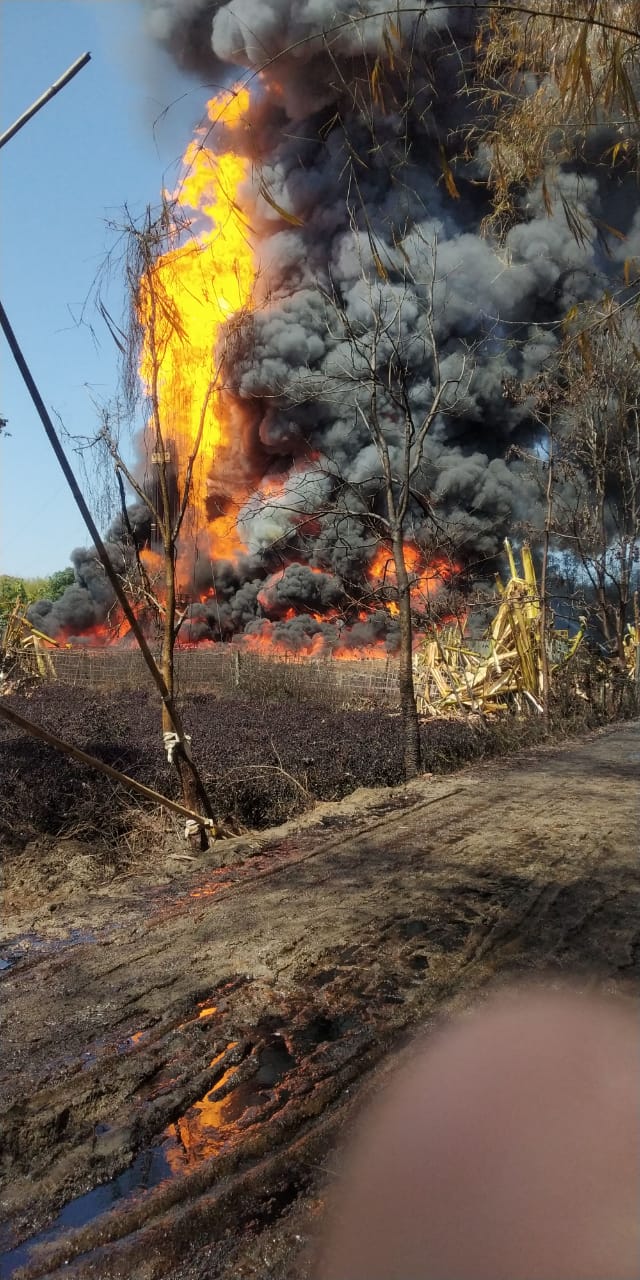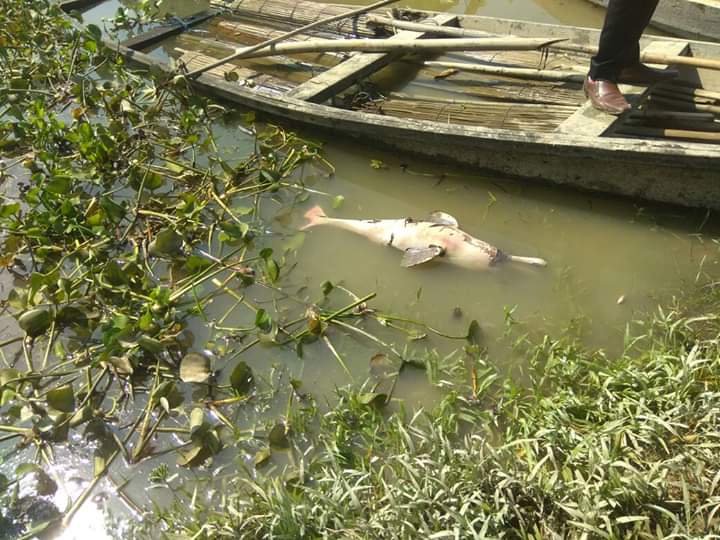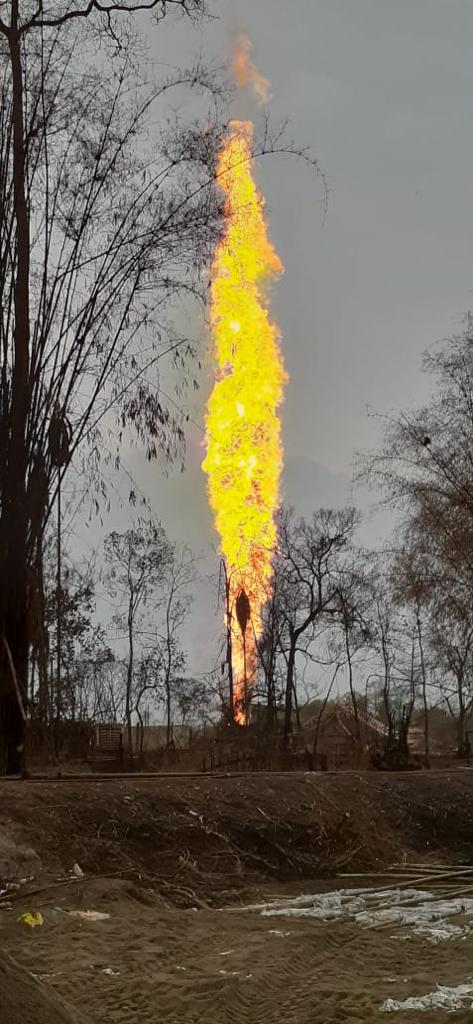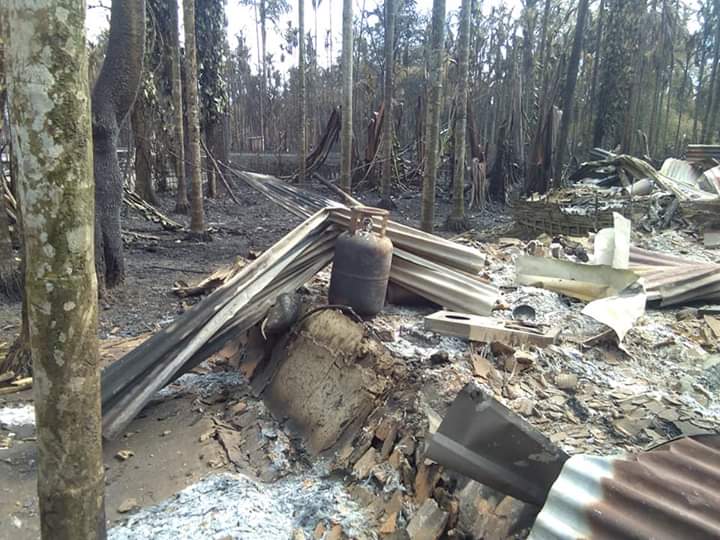Assam Baghjan well fire: Expert panel cites major lapses by OIL before NGT
As Oil India Limited struggles to douse the fire at its Baghjan Oilfield in Assam’s Tunsukia district, an expert committee report before National Green Tribunal finds many faults with its operations.

Gas has been leaking from Oil India Limited's oil well since May 27 and the fire it caught has still not been doused
For the past 72 days, gas-producing well of Baghjan-5, under Baghjan Oil Field of Oil India Limited (OIL) in Assam’s Tinsukia district, has been leaking uncontrollably. The leak started on May 27, 2020; it caught fire on June 9 – killing two of OIL’s firefighters at the site – and is still burning.
OIL, a public sector undertaking, had sought help from global experts to plug the leak in early June. A team from Alert Disaster Control, the Singaporean firm invited to assist OIL and ONGC to put out the fire, had reached the site in June. On July 22, three of these foreign experts received burn injuries while removing a spool from the well head. On August 5, 2020, OIL said its effort to douse the blaze is in its final stages.
As OIL authorities are struggling to douse the fire, new details pointing towards the oil giant violating major environmental norms in its operations over the years are emerging. The National Green Tribunal (NGT), on June 26, had constituted an eight-member committee of experts to probe the blowout, subsequent fire at the Baghjan oil well, and the damage it has caused to humans, wildlife and the environment. The Tribunal had also directed OIL to deposit Rs 25 crore with the district administration as interim compensation for the damage.
A hard-hitting, 406-page preliminary report was submitted before the Tribunal by the expert committee headed by Justice Brojendra Prasad Katakey, a former Judge of the Guwahati High Court. It cited that OIL violated key environmental norms, and that, OIL, till date, does not have the prior permissions, including the key ‘Consent to establish’ and ‘Consent to operate’ clearances.
The Committee, in its report, also called for scrutiny of all existing projects of OIL in Assam to ascertain if they meet the mandatory requirements of obtaining consent and authorisation under corresponding Acts and Rules.
“OIL did not have the mandatory Consent to Establish and Consent to Operate both under the Section 25 & 26 of the Water (Prevention & Control of Pollution) Act, 1974, under Section 21 of the Air (Prevention & Control of Pollution) Act and the Ruled framed thereunder, when it first started its drilling operations in Well Baghjan-5 in 2006,” the report mentioned.
The report has it that OIL violated key environmental norms, particularly under the Air (Prevention and Control of Pollution) Act, 1981, Water (Prevention and Control of Pollution) Act, 1974, Hazardous Waste (Management and Handling) Rules, 1989 and more recently the Hazardous and Other Wastes (Management & Transboundary Movement) Rules, 2016.

The Committee has also been critical of the Pollution Control Board, Assam in its report, and mentioned that a perusal of the records produced by OIL and PCB, Assam with respect to the projects pertaining to the Baghjan Oil Field reveals a discernable pattern of alleged infractions of the mandatory consents and authorization. “It is recommended that the Hon’ble NGT may also look into the activities of the PCB, Assam with regard to the grant of CTE / NOC and CTO for all the projects of OIL, presently in operation, in the State of Assam,” said the report.
OIL, meanwhile, has objected to the report before the Tribunal saying the report is based on desk research and review of secondary data. OIL requested the Tribunal not to form any conclusions based on the report. According to OIL, the observations and findings of the expert panel are based on unverifiable data – information provided by various organisations, local people and published reports – and not based on own scientific or laboratory data. OIL also said that the Committee did not visit the site before submitting the report.
A hazard that could have been prevented
The Committee is of the opinion that the Baghjan well blowout was preventable, and noted that it has hit the people in the region who are already braving the floods. The fire has affected nearby villages and agricultural land. Due to the floodwaters, the operation to douse the fire has been suspended. The nearby rivers are overflowing and have submerged the pumps installed for extinguishing the fire at the mouth of the well.
Apart from causing devastation in the form of burning several houses in the adjoining areas and damaging agricultural land, the leakage has led to extensive damage to natural resources including the Maguri-Motapung wetland, the Dibru Saikhowa National Park. Both of these are located only about 900 metres from the affected gas well. It is a biodiversity hotspot, home to 36 species of mammals, 500 species of birds, 105 species of butterflies, and 108 species of fish.

“The soil analysis conducted by the Pollution Control Board, Assam on 12.06.2020 and 23.06.2020 in and around the site of the incident have generally reported “Oil & Grease” above the permitted tolerance limits. In samples from the blowout site, heavy metals such as Lead and Copper have also been reported as above the permitted tolerance limits,” the report said.
The report stated that there was a deficiency in understanding the gravity of a critical operation like removal of ‘Blowout Preventer’ without having a confirmed and tested secondary safety barrier, that there was a deficiency in proper planning of critical operations. The report also said that there was a clear mismatch between the planning and execution, deviations from the Standard Operating Procedure, and serious deficiencies of a proper level of supervision of critical operation at the well site both from the contractor as well as from OIL.
The Committee is also critical of OIL as it didn’t have a contingency plan. In the report, the Committee is of the view that it is necessary to set up/induct a multidisciplinary team comprising of community members along with experts on wetland ecology, hydrology, fisheries, waterbirds’ specialists and others who will report to the Committee and will be responsible to formulate a restoration plan for the Maguri-Motapung wetland and also to ascertain the extent of damages and the compensation to be fixed for that purpose.

Revised compensation
The Committee has also expressed dissatisfaction on the compensation amount that has been provided by OIL to the affected people. It has proposed the formulation of three categories of affected families to assess the question of interim compensation – those whose houses have been completely gutted (Rs 25 lakh), those whose houses have been severely damaged (Rs 10 lakh), and those whose houses have been partially damaged (Rs 2.5 lakh).
- Those whose houses have been completely gutted by the fire thereby causing grave injury to life and health, loss of livelihood, cultivable land, livestock, damage to standing crops and horticulture, fisheries, etc.
- Those whose houses have been severely damaged thereby causing grave injury to life and health, loss of livelihood, cultivable land, livestock, damage to standing crops and horticulture, fisheries, etc.
- Those whose houses have been moderately/partially damaged or whose standing crops and horticulture have been partially damaged thereby causing injury to life and health, loss of livelihood, cultivable land, livestock, damage to fisheries, etc.

The report also states that the Committee, in its subsequent report, shall make necessary recommendations for the payment of compensation by the ‘Pollutor’, that is OIL, for the restoration of the damages caused to the eco-system.

